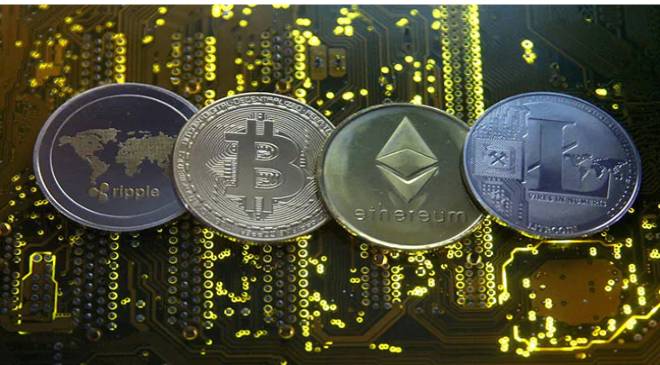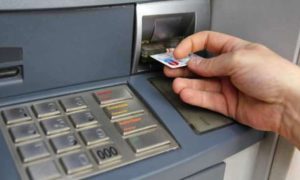Come July 1 and your cryptocurrency sale transactions will attract tax deducted at source (TDS) of 1 per cent.
This will be applicable to all virtual digital asset (VDA) transfers – cryptocurrencies, non-fungible tokens (NFTs), and so on – worth over Rs 10,000.
Budget 2022-imposed crypto tax
Cryptocurrencies have attracted a large number of investors and created quite a buzz in the last few years. While there is a Cryptocurrency Bill underway to regulate digital assets, the tax department wants to ensure its share of the pie. For this purpose, in this year’s Budget, the central government introduced a provision for TDS on transfer of VDAs and tax on gains from such transfers. “We are only taxing the profit made on these assets since a large number of crypto assets are being bought and sold; we are now taxing cryptos so we know who is buying them and keep a tab on the money trail,” Finance Minister Nirmala Sitharaman had then said.
Read More: Payments Council of India approaches government over central bank’s directive on credit lines
However, there were some ambiguities regarding who is responsible for withholding TDS under various scenarios. The Central Board of Direct Taxes (CBDT) issued a clarification on 22 June to make its stand clear on key issues. Industry participants and tax consultants welcome the clarifications. “We are happy that the Union Government has released a circular spelling out responsibilities and addressing key scenarios that crypto investors and exchanges encounter, with regard to the 1 percent TDS that will take effect on July 1. Investors can now plan their trades with clarity,” said Vikram Subburaj, CEO, Giottus Crypto Platform.
Let’s understand a little more about VDA and TDS applicability.
Also read: Crypto crash leaves investors in a tizzy – what should their next move be?
What are Virtual Digital Assets?
The newly-inserted clause (47A) in the Income Tax Act defines a VDA as any information, code, number or token (not being Indian currency or any foreign currency) that is generated through cryptographic or other means. “(…the VDA provides) digital representation of value which is exchanged with or without consideration, with the promise or representation of having inherent value, or functions as a store of value or a unit of account and includes its use in any financial transaction or investment, but not limited to, investment schemes and can be transferred, stored or traded electronically.” NFTs and other tokens of similar nature are included in this definition.
Tax on gains from cryptocurrencies
Effective financial year 2022-23, any gains made through transactions in VDA attract tax. “Any income arising from the transfer of virtual digital assets will be taxable at the rate of 30 percent with no setoffs allowed as deductions except the cost of acquisition, being the only allowable deduction,” says Deepak Jain, Chief Executive, TaxManager.in. Remember, this is a flat tax of 30 percent. That is, irrespective of whether you have taxable income or not, or you fall in the lower tax brackets, your VDA gains will be taxed at the rate of 30 percent.
Read More: SBI, other PSU banks commit Rs 6,071 crore to Adani Group for copper business
This apart, unlike losses from other capital assets, loss on sale of digital assets cannot be set off against any other income. “You will not be allowed to be carry forward the losses to subsequent years for set-off against gains in those years either,” says Jain.
TDS withheld at the time of making payments
The purpose of levying TDS on crypto transfers is to capture the details of all the transactions related to VDS. “TDS at the rate of 1 percent will be deducted on the payment of sale consideration of VDA, if the cumulatively sale consideration exceeds Rs 10,000 in any financial year. The threshold limit for TDS is Rs 50,000 for specified persons (that is, those who need to get their accounts audited) which includes individuals and Hindu Undivided Family (HUFs),” said Jain. TDS needs to be deducted at the time of making payment or transferring the consideration to the seller. For instance, if someone is buying VDA valued at Rs 1 lakh, Rs 1,000 (1 percent of Rs 1 lakh) needs to be deducted and remaining Rs 99,000 should be transferred or paid to the seller of the VDA.
The CBDT has now clarified that the onus of withholding the TDS lies with the person making the payment to the seller — it can be a buyer, an exchange or a broker. That means TDS needs to be deducted from the selling price and after deducting the TDS amount, the rest can be paid or transferred to the seller.
Scenario 1 – Peer-to-peer: In cases where only the buyer and the seller are involved in the transaction and there is no exchange or broker involved, then the buyer (i.e. person paying the consideration) is required to deduct tax under Section 194S of the Act.
Scenario 2 – Through exchange or broker: When the VDA transfer takes place through an exchange or broker, tax may be deducted only by the exchange which is crediting or making payment to the seller. However, where the credit or payment between the exchange and the seller is done through a broker (who is not the seller), the onus of deducting tax is on both the exchange and the broker. However, the onus shall be on the broker, where there exists a written agreement between the exchange and the broker that the broker shall deduct tax under Section 194S.
Scenario 3 – VDA is owned by Exchange: In such cases, though the primary responsibility is of the buyer or his broker to deduct the TDS, the exchange can enter into a written agreement with the buyer or his broker that in regard to all such transactions the exchange would pay the tax. The exchange will have to furnish a quarterly statement (Form No. 26QF) for all such transactions of the quarter on or before the due date and also furnish its income tax return, including all such transactions in the return.
Scenario 4 – VDA payment in kind: Apart from transfer of VDA against cash payment, there are instances of making payment in kind (other than cash payment) or in exchange of another VDA, or partly in kind and partly in cash. In such a scenario, the buyer will have to release the consideration in kind after the seller provides proof of payment of such tax (e.g. TDS challan details, etc.). In case of exchange of VDA against VDA, both buyer and seller need to pay tax with respect to transfer of VDA and show the evidence to each other so that VDAs can then be exchanged. This would then be required to be reported in the TDS statement along with challan number, by filling up Form 26Q. However, if the transfer of VDA takes place through an exchange, the onus to deduct and deposit TDS can shift to the exchange, provided there is written consent from the buyer and seller.



































